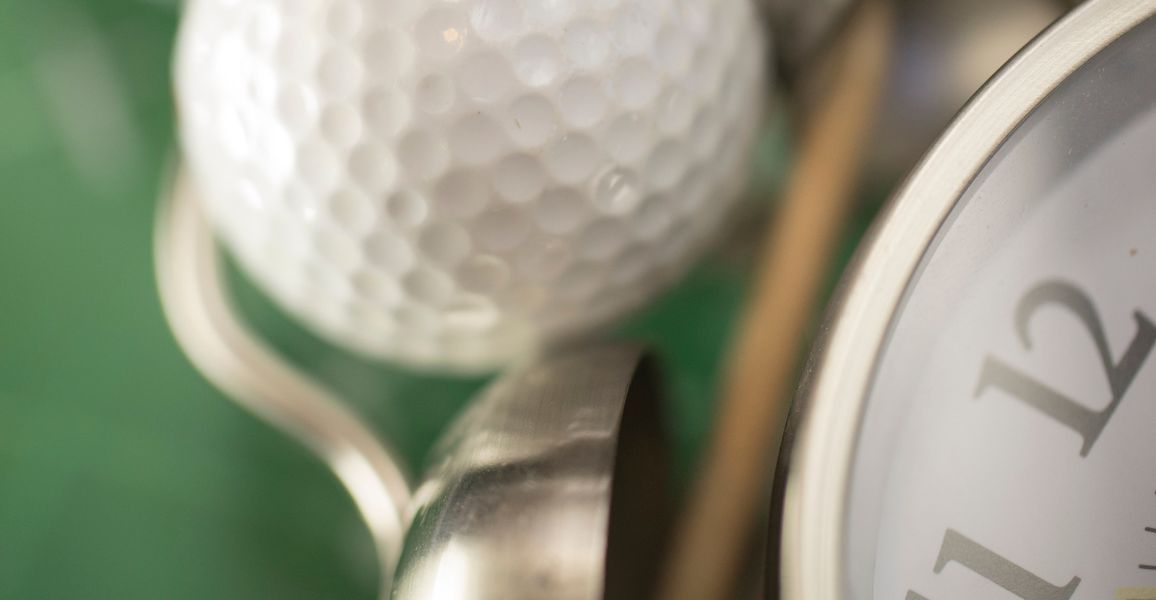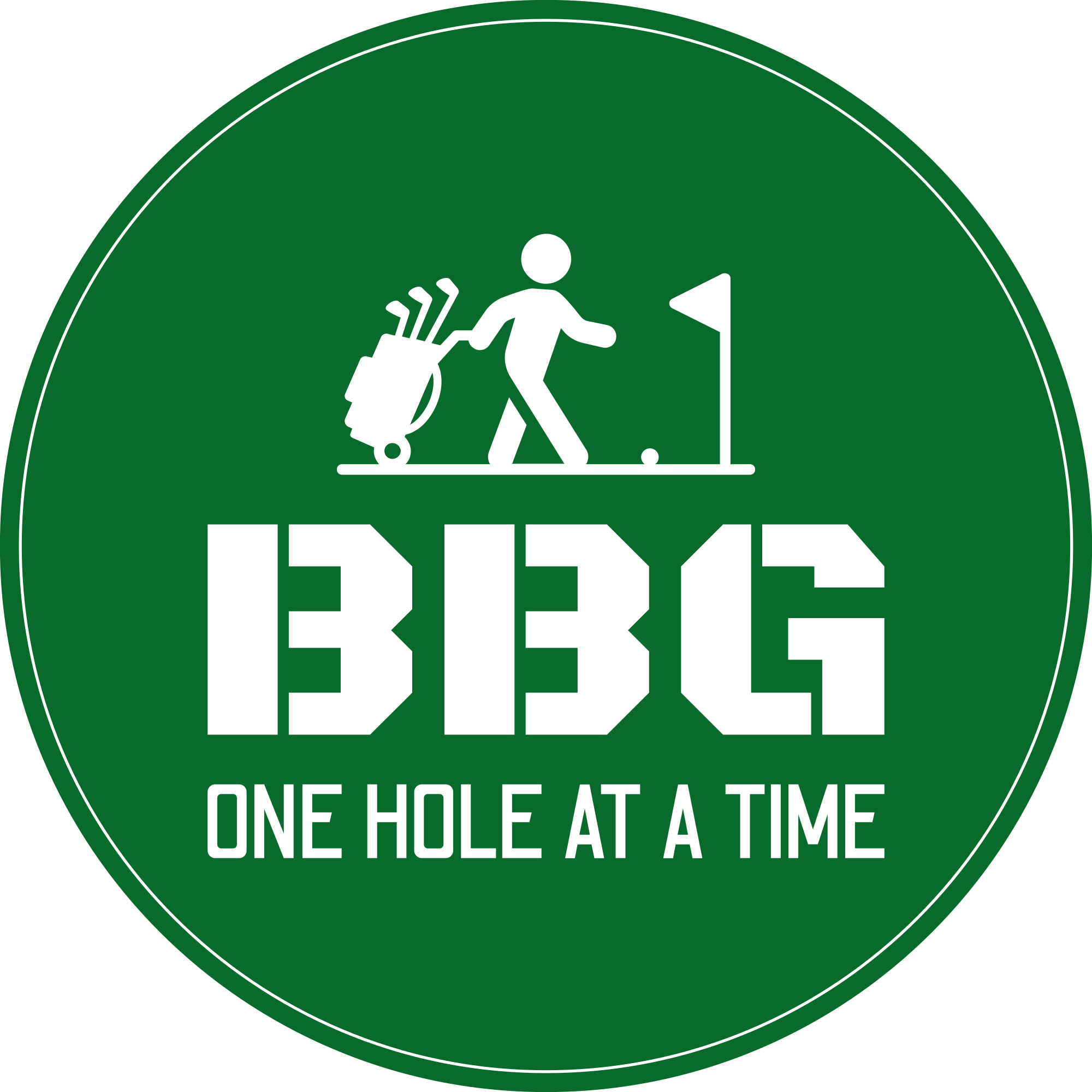Golf is a mental game. Golfers themselves have to be mental to want to fall in love with a sport that can bring you to your knees any given weekend.
You may or may not believe by reading the title that you can knock strokes off your scorecard without striking the ball but hear me out.
Why You Need A Simple Pre-Shot Routine In Golf
90% of the time, you will hit a poor shot when you feel awkward before you hit the ball. The lack of confidence in your approach sends signals to your nervous system, and then your body plays out your negative thoughts.
You can limit those bad feelings and the awful shots they cause. All you need to do is work on developing a good pre-shot routine. Golf pre-shot routines will fill you with confidence before every shot and are the key to shooting lower scores.
Think about it the pros have pre-shot routines, and if the pros do it, it must work. However, you shouldn’t just copy someone else’s routine. It would be best if you created your own pre-shot routine.
In this article, you will learn how to develop a unique pre-shot routine tailored to you so it works every time.
How Long Your Pre-Shot Routine Should Take
It would help if you took 15-25 seconds for each shot. When you watch the professionals, they have the luxury of taking their time since they don’t have to worry about the speed of play or a 2 ball right behind them.

Standing over your ball for too long will let you overthink and result in hitting more bad shots. It should flow naturally and is more about getting your mind right than working on golf swing mechanics.
You can do certain steps before you stand behind the ball, so technically, your routine will take longer.
When Your Pre-Shot Routine Should Start
Where a few golfers go wrong is that they believe the pre-shot routine starts once the practice swing or swings start flying. They are wrong.
Your pre-shot routine should happen much sooner. It should begin before you put your tee into the ground, as you’re walking to your second shot, or when you’re approaching the green.
There needs to be a shift in your attention and focus. To do this, you need to pick a moment in your head when you will start your routine.
At the tee box, this could be just before you take the club out of your bag. You can start when you are roughly 30 steps away from your golf ball or sooner for your follow-up shots. It’s entirely up to you.
Make sure you find the moments that will trigger your routine and stick to them, as this moment will be the first step to hitting more consistent shots.
Think About The Shot You’re Going To Hit
Visualizing your next shot is crucial. Before you address the ball, you should be confident in your shot choice and ability to execute it.
You need to pick shots and a shot shape to get you to the hole with little to no penalty shots. The pre-shot routine is about confidence. If you’re hesitant or afraid of the shot you’re about to hit, you’re in trouble.
Look at the hole and consider the yardage, where the hazards are, whether you can reach them with a driver, or how strong the wind is, amongst other factors.
The same goes for shots to the green.
What’s the distance left to the hole, is it safer to lay up, what is your lie like, and where are the hazards?
There is a fine line between thinking and overthinking about your next shot. All you must think about is what shot you can hit confidently and know it will be safe.
Even if you’re on a long par 5 and the only golf shot you feel confident hitting is a 9 iron, hit it. Confidence in your shots is the start of you shooting lower rounds.
Pick A Target And Stick To It
Now you’ve picked the type of shot you want to hit. It’s time to pick a target.
When aiming, you can make your target smaller. You’re not aiming for the left side of the fairway anymore. From now on, you’re aiming for a sectioned area you can see in your mind that’s on the fairway.
Visualize your ball landing in that area over and over. Your mind always works better when fully locked in on a smaller target.
Look for something past where you want the ball to go. Look through your target area. It could be anything, for example, a big tree in the distance. Just find something and stick to it.
Lastly, you can focus on a target in front of the ball. Look on the ground and pick a point just ahead of the ball. It should be on the same line between you and your target. With this target being closer, it feels impossible to miss.
Trying to do all 3 of these methods on every shot could work against you, so try them out and see which one works best for you.
Get Some Practice Swings In
You’ve taken a few practice swings before, but keep reading and see if any of this sounds familiar.
You can take 2,3,4…possibly 5 swings before some shots depending on whether your last swing felt right. Maybe you try to rehearse the exact shot you’re about to take, or you think about flicking your wrists just right, shifting your weight, rotating your body, and dropping your hip, all just seconds before your actual shot.
If you can relate to any of the above, they could add to your scorecard rather than lower it.
Your swings should be more about the tempo of the swing. They should loosen you out and flow freely.
Take 1-2 swings. They don’t have to be full swings of the club, either. You can take a few half swings or quarter swings, whatever feels natural. Whatever makes you feel confident about your next shot.
Swing mechanics are not something you should try to fix just before a shot. Swing mechanics are for the practice range or during non-competitive rounds.
Address The Ball And Swing
You’re almost there at this stage. You’ve done all the heavy lifting. Now you have to step up and give it your best swing. When addressing the ball, don’t stand over it for too long. The more time you spend on your ball, the more negative thoughts you’ll release.
The last thing you want is a highlight reel in your head of what could go wrong.
Once you line your club up behind the ball, take a deep breath, look up at your target, back at your ball, maybe have a little club waggle or two and then strike.
You must trust all your previous decisions to this point because if you try to recalculate everything now, you will suffer in the long run…
Now that you struck the golf ball, there is just one more thing a great routine needs.
Take Your Shot In
Learning to take in your shots is essential, especially if it’s a lousy shot.

Once you hit the shot, accept it and move on. Letting your temper get the best of you won’t move the ball closer to the hole.
However, it can cause you to hit more bad shots during the rest of your round. Learning to take the good with the bad in golf is the most significant difference between elite players and amateur golfers.
Once you hit the shot, switch off your golf mode for a little while. Have a little fun with your golf buddies, or enjoy the views.
Spending an entire round thinking entirely about golf will make you tense, irritable, and a lousy golfer to play with.
Just hit it, then quit it!
Pre-Shot Routine For The Green
When you get to the green, your pre-shot routine has to change slightly.
All you have to do is read your putt, line it up, and roll it into the hole.
Try looking at your putt from multiple angles to get a better line.
Once you get your line, then what you have to do is line it up. Try picking a spot on the green or using a line on your golf ball.
All that’s left now is to put it in the hole.
Practice Your Pre Shot Routine At The Driving Range Or Home
Practicing your pre-shot routine is as important as practicing your ball striking.
Top golfers treat every shot on the range like it’s on the golf course. They work through their entire routine before they strike. This attention to detail and repetition separates them from many golfers.
You can also try this at home if you have the space to do it. No golf balls are needed. All you need is a golf club and some imagination.
Also, make sure when you’re at home to keep an eye out for anything fragile!
Conclusion
No matter what your goals are for golf if it’s breaking 90 (hopefully over a full 18 and not 9 holes!) trying to be a little better than your buddies, or just trying to stop losing golf balls, a solid pre-shot routine is necessary.
